New York Unify with California, Hawaii, Connecticut, Indiana, and Massachusetts as Beach Closures Derail Vacation Trips During Peak Summer Travel Across US: What You Need to Know
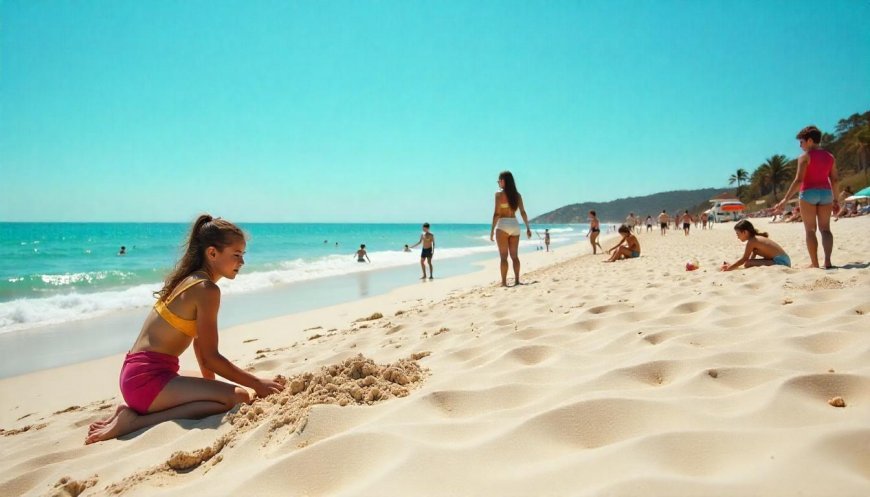
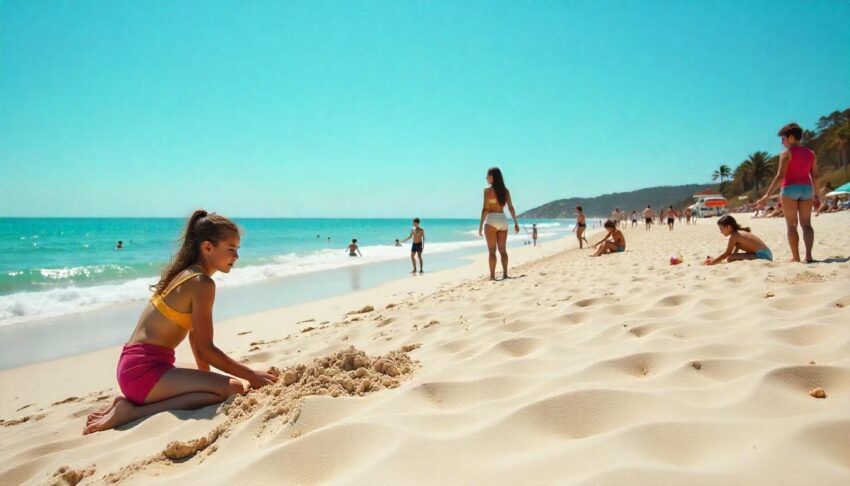
It comes as New York becomes the latest state — unifying with California, Hawaii, Connecticut, Indiana, Massachusetts — to impose beach closures affecting travel at the height of summer travel season as US beaches suffer from a wave of bacteria contamination, harmful algal blooms, sewage overflows and lifeguard shortages, prompting authorities to limit swimming access at dozens of well-known destinations as vacationers flock to the waves during the nation’s busiest tourist season. Throughout coastlines and lake shores, water quality tests are coming up short just as families have turned up to take long-planned vacations; recreation-heavy communities are set back financially. Now, this epic upheaval is felt from the Atlantic shores of Massachusetts to the Pacific waters of California and the volcanic beaches of Hawaii, as radical 2025 has gone down as one of the most active summer seasons of recent memory.
New York Beaches Shut Down as Bacteria and Blooms Disrupt Summer Travel Plans
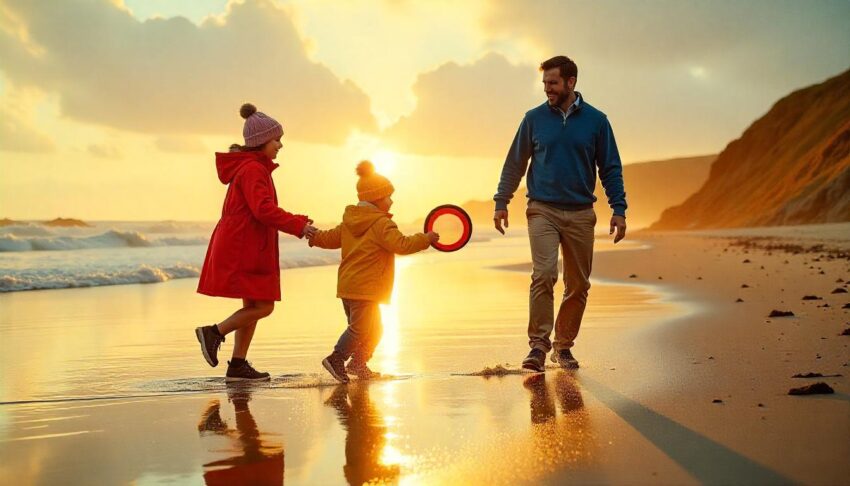
In New York, beach closures have arrived at the worst possible moment—just as families hit the road for peak summer vacations. The state has confirmed eight official beach closures, triggered by a mix of dangerous bacteria levels, harmful algal blooms, and lifeguard shortages. These shutdowns are derailing thousands of weekend getaways in regions known for drawing both locals and out-of-state tourists.
Among the hardest-hit locations is Jones Beach’s Zach’s Bay, a popular gathering spot on Long Island that tested above safe thresholds for Enterococci bacteria. Stony Brook’s kiddy beach and Lake Welch at Harriman State Park have also closed after E. coli exceedances raised immediate public health concerns.
The situation is even worse upstate, where Gilbert Lake, Taughannock Falls, and Verona Beach have all been taken offline due to the presence of harmful algal blooms (HABs)—a toxic condition caused by nutrient-rich runoff and warm water. These blooms not only pose a threat to swimmers but also to pets and wildlife that come into contact with the water.
Meanwhile, Buttermilk Falls was closed simply because it lacked available lifeguard coverage, underscoring the added strain state parks are facing this summer.
Since late June, additional closures have extended to beaches operated by towns and counties. Benjamin Beach, Ronkonkoma Beach, Sayville Marina Park Beach, Morgan Beach, and Biltmore Beach Club have all restricted bathing access until repeated water samples confirm safety.
With Jones Beach alone drawing over six million visitors a year, the ripple effect of these closures is massive. Tourists are arriving at the gates only to find the swim areas barricaded, and many are left scrambling for alternatives in the sweltering heat. As testing continues, state health officials urge visitors to check daily updates through the New York State Parks website, where each closure is mapped and categorized by severity.
Beaches Affected in New York:
- Jones Beach (Zach’s Bay) – Enterococci exceedance
- Harriman Lake Welch – E. coli exceedance
- Stony Brook (Kiddy) – E. coli exceedance
- Gilbert Lake – Harmful algal bloom
- Taughannock Falls – Harmful algal bloom
- Verona Beach – Harmful algal bloom
- Point Au Roche – Harmful algal bloom
- Buttermilk Falls (Jennings Pond) – No lifeguard
- Ronkonkoma Beach – Contaminated, awaiting test clearance
- Sayville Marina Park Beach – Contaminated, awaiting test clearance
California Beach Closures Stretch from La Jolla to the Border as Health Warnings Escalate

In California, beachgoers are facing widespread warnings and outright closures across San Diego County, a region typically bustling with tourists during the summer high season. This year, however, high bacteria levels and environmental hazards have turned several iconic coastal spots into no-swim zones—spoiling vacation plans and raising urgent health concerns.
At the top of the alert list is Imperial Beach, a community near the U.S.-Mexico border that’s now grappling with one of the longest-standing beach closures in the country. Contaminated runoff from across the border has forced authorities to fully close the shoreline from the south end of Seacoast Drive through Imperial Beach Pier all the way to Carnation Avenue. The area has been under recurring closures since 2021 due to persistent sewage overflows, and 2025 is proving no different.
Just north of Imperial Beach, authorities have also shut down access to the Tijuana Slough National Wildlife Refuge and nearby areas within Border Field State Park. Water samples continue to show bacterial concentrations far beyond safe levels, and warnings are expected to remain in place for the foreseeable future.
The contamination isn’t confined to the border region. Multiple advisory zones now dot the map from La Jolla to Del Mar, including:
Beaches Affected in California:
- Imperial Beach – Sewage contamination (closed)
- Tijuana Slough – Cross-border sewage (closed)
- Silver Strand (Avenida Lunar to Carnation Ave) – High bacteria (closed)
- Coronado – Avenida Lunar – High bacteria advisory
- La Jolla – Children’s Pool – Bacteria advisory
- Encinitas – Swami’s Beach – Bacteria advisory
- Cardiff State Beach (San Elijo Lagoon area) – Bacteria advisory
- Del Mar – San Dieguito River outlet – Bacteria advisory
- Mission Bay – Santa Clara Cove – Bacteria advisory
Each of these areas has posted warning signs advising swimmers to avoid water contact due to high bacterial counts. While technically not closed in all cases, these advisories are strongly enforced and indicate a high risk for gastrointestinal and skin-related illnesses.
Even Coronado Beach, one of the state’s most famous family-friendly shorelines, is affected. Avenida Lunar, a prime beach access point for hotel guests and day-trippers alike, is currently under a contamination alert. The closure of Silver Strand Shoreline, a scenic stretch connecting Imperial Beach to Coronado, has added further frustration for visitors staying in nearby resorts.
To make matters worse, California’s annual mussel quarantine is in effect throughout the coastline. While not a direct threat to swimmers, it underscores the broader ecological instability and toxic algae risks currently impacting coastal waters.
With millions of tourists expected along California’s beaches this summer, state health officials are urging visitors to consult San Diego County’s live beach status portal before entering the water. Many beaches remain open for sunbathing, surfing, or walking—but swimming is off-limits in growing zones, and that’s putting a serious damper on what should be the busiest beach season of the year.
Hawaii Battles Beach Advisories and Chronic Contamination Just as Tourist Season Peaks
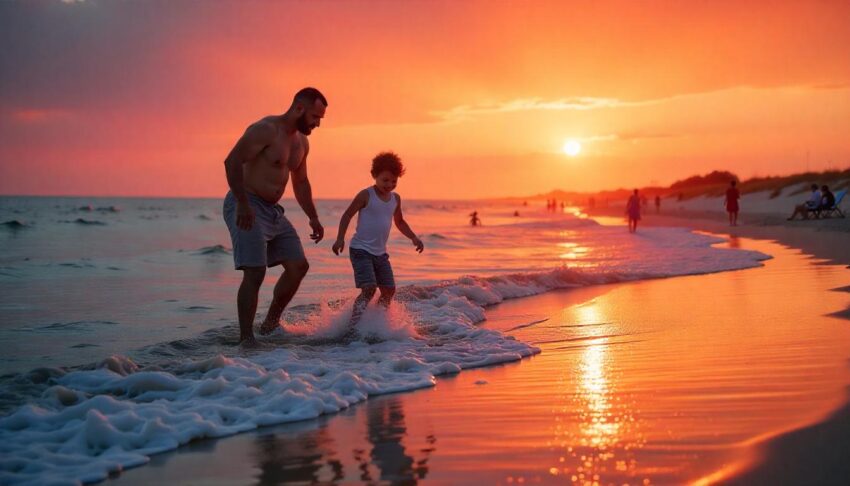
In Hawaii, where the ocean is the centerpiece of nearly every vacation itinerary, growing numbers of beach advisories are casting a long shadow over the islands’ peak tourism months. While the state hasn’t ordered mass closures, several iconic swim spots are now under active health warnings due to elevated bacteria levels, murky runoff, and long-term pollution—leaving visitors disappointed and locals deeply concerned.
One of the most visible disruptions is at Waiʻoli Beach Park in Hanalei Bay on Kaua‘i. Since late June, a brown-water advisory has remained in effect after tests showed dangerous levels of bacteria in the surf. Officials blame the contamination on stormwater runoff and stream inflow, which turn the usually pristine water into a high-risk zone for infections. Tourists are being urged to avoid swimming for at least 48 to 72 hours after any rainfall, yet the advisory has lingered far longer.
On O‘ahu, Kahaluʻu Beach—once a beloved snorkeling destination—has now become infamous for its alarming bacteria record. The site has failed water quality tests a staggering 92% of the time in recent years, earning it the unwelcome title of “America’s most contaminated beach” in 2025. Despite ongoing community cleanup efforts, the beach remains a high-risk area, especially near the shoreline and storm drains.
Elsewhere across the islands, chronic pollution continues to impact visitor favorites:
- Nāwiliwili Stream at Kalapaki Bay consistently fails water-quality standards, especially after rainfall.
- Punaluʻu Beach, famous for its black sand and sea turtles, is also a red-flag zone, frequently closed for bacterial contamination near freshwater runoff points.
Although Miloli‘i and Hōnaunau Bay on Hawai‘i Island were recently cleared and reopened for swimming, officials warn that many beaches near stream outlets or cesspools remain unstable. The state’s Department of Health updates advisories frequently, but changes can happen overnight, especially during Hawaii’s summer storm cycle.
The situation comes at a time when the islands are experiencing a sharp rebound in tourism. With over five million visitors expected to touch down in O‘ahu alone this year, the growing list of unsafe beaches is a major concern—not just for travelers but for the long-term sustainability of Hawaii’s fragile marine ecosystem.
Health officials continue to encourage beachgoers to check the Hawaii Clean Water Branch website before swimming, especially at beaches near river mouths or low-lying residential areas. In the islands where crystal-clear waters are part of the promise, this summer’s murky reality is forcing many to reconsider their plans.
Beaches Affected in Hawaii:
- Waiʻoli Beach Park (Kaua‘i) – Brown-water advisory since June
- Kahaluʻu Beach (O‘ahu) – 92% bacteria test failure rate
- Nāwiliwili Stream @ Kalapaki Bay – Chronic contamination
- Punaluʻu Beach (O‘ahu) – Bacteria near stream outlet
- Miloli‘i and Hōnaunau Bay – Recently reopened after bacterial advisory
Connecticut Shuts Down Lakes and Beaches as Bacteria Forces Weeklong Closures Across State Parks

Connecticut is experiencing an unwelcome trend this summer: a growing list of swimming areas across the state’s beloved parks and lakes are closing just as vacationers pack their cars for seasonal getaways. What began as a few isolated cases has now turned into a rolling series of shutdowns caused by elevated bacteria levels, derailing family plans and frustrating beachgoers throughout the region.
At the heart of the closures are some of the state’s most frequently visited natural destinations. As of mid-July, Indian Well State Park in Shelton, Lake Waramaug in Kent, and Sandy Beach at Crystal Lake in Ellington all remain off-limits to swimmers following repeated failed water quality tests. The state’s Department of Energy and Environmental Protection (DEEP) confirmed that sample results from these areas exceeded safe bacteria thresholds, prompting immediate action to protect public health.
Earlier in the same week, Gardner Lake State Park in Salem and West Beach at Rocky Neck State Park in Niantic also experienced temporary closures, though they were allowed to reopen after follow-up tests showed improved conditions. The cycle of closures and reopenings has created confusion and disrupted day-trip plans for both locals and out-of-state visitors looking to cool off in Connecticut’s inland waters.
State officials have emphasized that while beaches may close for swimming, the surrounding parks themselves remain open for hiking, fishing, kayaking, and picnicking. But for many families traveling with young children or seniors, the inability to swim often makes the trip not worth taking.
Adding to the complexity, DEEP says that water quality testing is conducted weekly from Memorial Day through Labor Day, meaning some closures may not be lifted for several days, depending on lab turnaround. Heavy rainfall, which contributes to stormwater runoff and bacterial surges, is also playing a role in triggering new shutdowns—especially in low-lying areas or near agricultural zones.
DEEP maintains a real-time water quality update page on the ctparks.com website, where travelers are urged to check before visiting. But for those already en route or arriving unaware, the growing list of closures is leaving many to rethink their summer weekend plans.
With Hammonasset Beach State Park attracting nearly one million visitors a year, even a few key swim area closures in Connecticut can ripple far beyond their shores.
Beaches Affected in Connecticut:
- Indian Well State Park (Shelton) – Closed due to bacteria
- Lake Waramaug State Park (Kent) – Closed due to bacteria
- Sandy Beach at Crystal Lake (Ellington) – Closed due to bacteria
- Gardner Lake State Park (Salem) – Reopened after advisory
- West Beach at Rocky Neck State Park (Niantic) – Reopened
Indiana Closes Key Beaches as E. Coli Contamination Disrupts Vacationers at Brookville Lake

Indiana’s lakefront parks, usually calm escapes during the summer heat, are now facing growing safety concerns as state officials shut down swimming areas due to high levels of E. coli. The closures are hitting popular inland beach destinations at a time when families across the Midwest are seeking short-distance trips and outdoor recreation.
The most recent closure was issued at the Mounds State Recreation Area on Brookville Lake, located in the southeastern part of the state. Weekly water quality tests revealed dangerous E. coli concentrations, forcing the Indiana Department of Natural Resources to immediately close the beach for swimming. Officials have not announced a reopening timeline, and the beach remains closed until further notice.
This follows another closure just weeks earlier at Whitewater Memorial State Park in Union County, where the same contamination issue temporarily shuttered the swimming area. That beach has since reopened, but the back-to-back incidents underscore a broader issue with fluctuating water quality during summer months.
While Quakertown State Recreation Area, also on Brookville Lake, remains open, the uncertainty surrounding when closures might occur has many visitors feeling cautious. Brookville Lake is one of Indiana’s most visited outdoor areas, drawing crowds from Cincinnati, Indianapolis, and Louisville thanks to its proximity and accessible shoreline.
The Indiana DNR conducts weekly testing across state-managed beaches between Memorial Day and Labor Day. E. coli outbreaks are often tied to recent rainstorms, increased lake traffic, and nearby agricultural runoff. Still, the timing couldn’t be worse—just as families were booking cabins, RV sites, and boat rentals for peak July weekends.
With water access blocked at Mounds and recently restored at Whitewater, park officials are asking swimmers to check for updates on the Indiana DNR website before making the trip. For now, only parts of the lake remain swimmable, while one of the state’s most visited beaches remains off-limits.
Beaches Affected in Indiana:
- Mounds Beach (Brookville Lake) – Closed due to E. coli
Massachusetts Closes Over 30 Beaches as Bacteria and Algae Blooms Collide with Peak Summer Travel
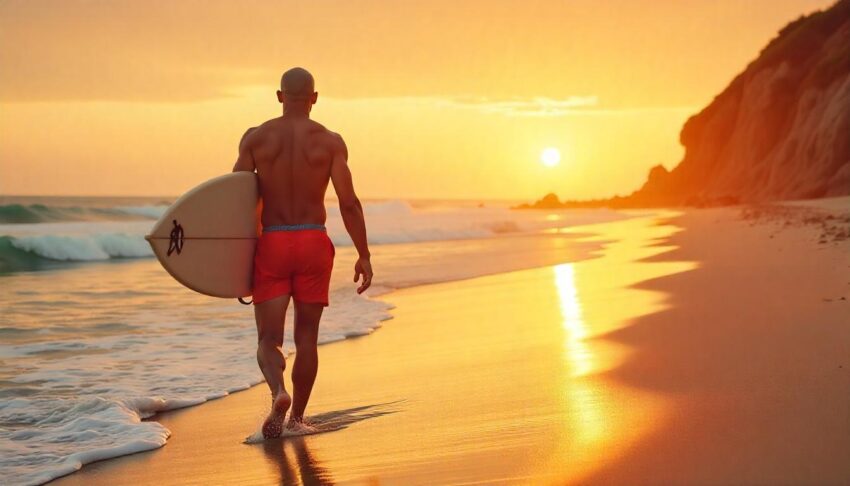
Massachusetts is experiencing one of the most widespread beach shutdowns in the country this summer, with over 30 swimming areas closed in a single day as high heat and waterborne hazards converge. The closures, prompted by bacterial exceedances, harmful cyanobacteria blooms, and infrastructure complications, are hitting both inland lakes and coastal favorites during the state’s busiest travel weeks of the year.
The Massachusetts Department of Public Health confirmed that the majority of closures stem from bacteria contamination, often linked to runoff from recent storms, malfunctioning septic systems, and urban wastewater overflows. Popular beaches in Boston, Quincy, Lynn, Newburyport, Swampscott, and Winthrop have all posted “no swimming” advisories, including:
- Constitution Beach, Malibu Beach, and Tenean Beach in Boston
- Wollaston Beach in Quincy
- Kings Beach in Lynn and Swampscott
- Plum Island Point in Newburyport
Inland areas are also affected. Hopkinton Reservoir, Carbuncle Pond in Oxford, and Upper Mill Pond in Brewster are closed due to cyanobacteria blooms, a toxic blue-green algae that poses serious risks to both people and pets. These harmful blooms are increasing across freshwater lakes in the Northeast as rising temperatures and nutrient pollution create ideal conditions for their spread.
Adding to the disruption, Walden Pond’s main beach in Concord—one of the most historically significant and heavily visited inland swimming areas in the state—is closed for the entire summer due to construction of a new $6.1 million bathhouse. The nearby Red Cross Beach remains open but unguarded, limiting safe swim options for visitors.
Massachusetts’ coastline and lakes draw tens of thousands of visitors daily in July and August. These sudden closures have forced vacationers to cancel reservations, divert road trips, and scramble for replacement plans. From Cape Cod to the Berkshires, the message is the same: check before you go.
Health officials continue to monitor bacteria and algae levels across the state, posting real-time updates on the Massachusetts DPH beach advisory page. With more closures possible as temperatures climb, travelers are being urged to have back-up options ready—or plan non-swimming alternatives altogether.
Beaches Affected in Massachusetts:
Closed Due to Bacterial Contamination:
- Constitution Beach (Boston)
- Tenean Beach (Boston)
- Kings Beach (Lynn, Swampscott)
- Wollaston Beach – Channing St, Milton St, Rice Rd, Sachem St (Quincy)
- Plum Island – Plum Island Point, End of Island 2 (Newburyport)
- Donovans Beach (Winthrop)
- Sandy Beach (Danvers)
- Moses Smith Creek (Dartmouth)
- Children’s Island – Willow Ave area (Salem)
- Cataumet Harbor (Bourne)
- Jacknife Harbor (Chatham)
- Beamans Pond – Campground and Day Use (Templeton)
- Leeside Beach (Swansea)
- Crow Hill Pond (Westminster)
- Shannon Beach at Upper Mystic (Winchester)
Closed Due to Harmful Cyanobacteria Blooms:
- Hopkinton Reservoir – Upper Beach (Ashland)
- Carbuncle Pond (Oxford)
- Upper Mill Pond (Brewster)
- Upton Town Beach (Upton)
Closed Due to Infrastructure Projects:
- Walden Pond – Main Beach (Concord) – Closed all summer for bathhouse construction
- (Red Cross Beach remains open but unguarded)
Closed Due to Sewer Overflows:
- Jones Town Beach – North and South (Dartmouth)
The beach closures have struck in the height of the summer travel season across the US, due to bacterial contamination, toxic algae blooms, sewage runoff and lifeguard shortages; NY is unifying with California, Hawaii, Connecticut, Indiana and Massachusetts. Now, with dozens of beaches closed in the heart of peak tourist season, families and vacationers around the country are grappling with abrupt changes to their summer plans.
A Summer of Setbacks on America’s Shores
From the Atlantic to the Pacific and across America’s lakes and island coastlines, the 2025 summer travel season has taken a sharp turn as beach closures upend millions of vacation plans. Whether it’s bacterial outbreaks in New England, sewage contamination in California, or brown-water warnings in Hawaii, the message to travelers is increasingly clear: this year, even the most iconic beaches are not guaranteed safe or swimmable.
For families who spent months planning road trips, booking coastal cabins, and mapping out picnic spots, the sudden wave of shutdowns has brought confusion, cancellations, and costly reroutes. It’s not just the lost swims—it’s the missed memories.
Officials across New York, California, Hawaii, Connecticut, Indiana, and Massachusetts are racing to monitor water quality, retest samples, and post updated advisories. But with closures sometimes lasting days—or in the case of Walden Pond, an entire season—travelers are learning to stay flexible, check status dashboards, and pack backup plans along with their sunscreen.
As climate shifts intensify storm patterns, amplify algal blooms, and strain aging infrastructure, experts warn that these closures may not be isolated to 2025. For now, the best defense is information. And for those still chasing a summer escape, the golden rule is simple: check the beach before you bring your towel.
The post New York Unify with California, Hawaii, Connecticut, Indiana, and Massachusetts as Beach Closures Derail Vacation Trips During Peak Summer Travel Across US: What You Need to Know appeared first on Travel And Tour World.






